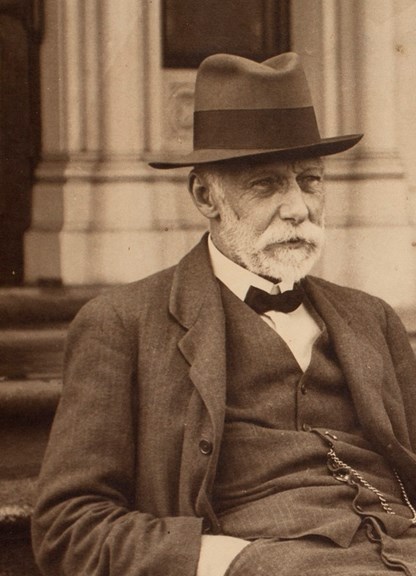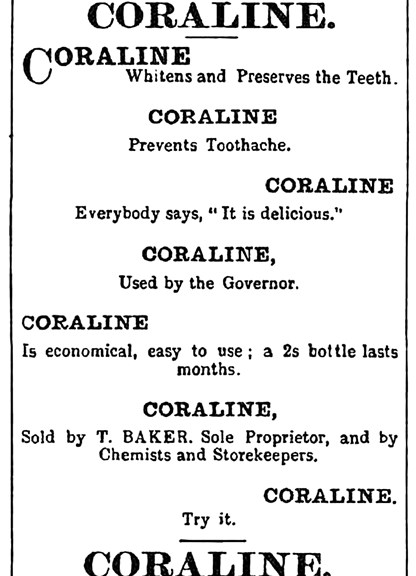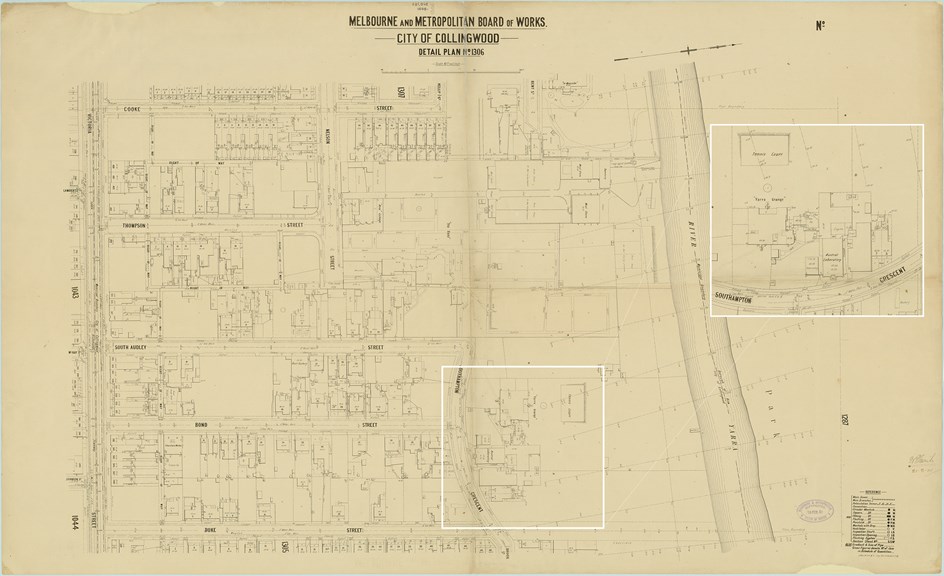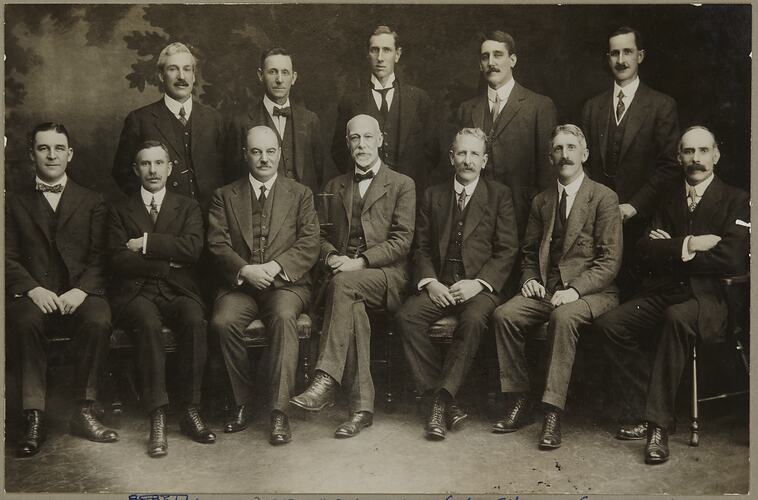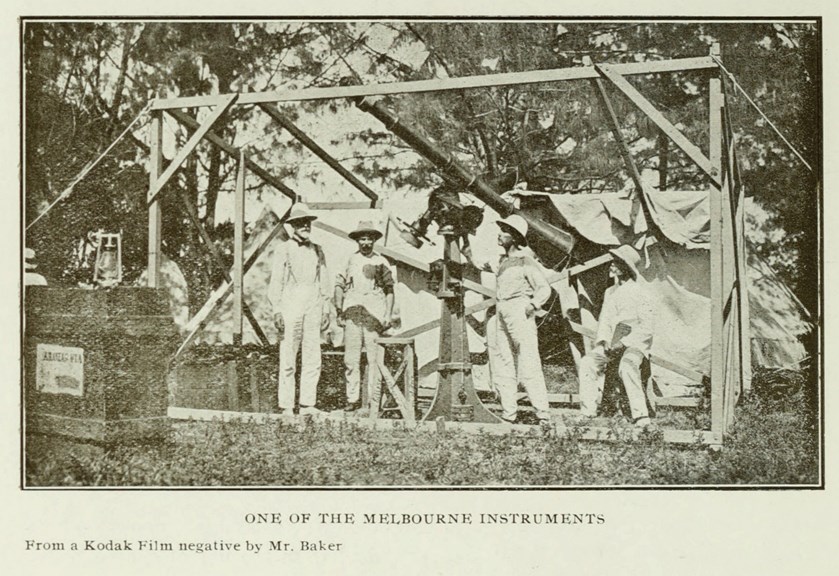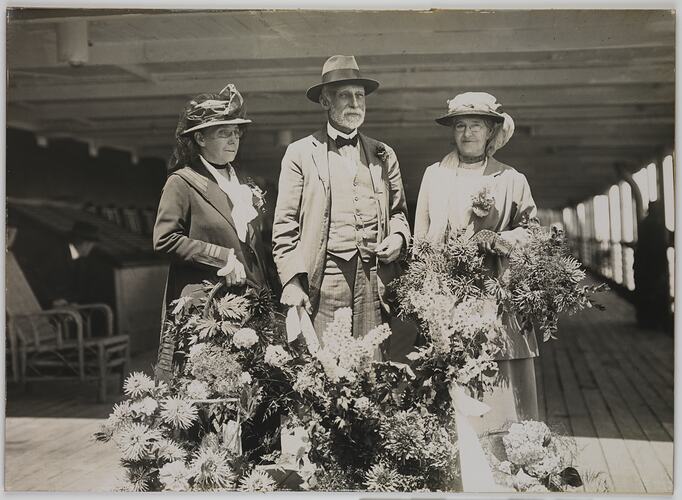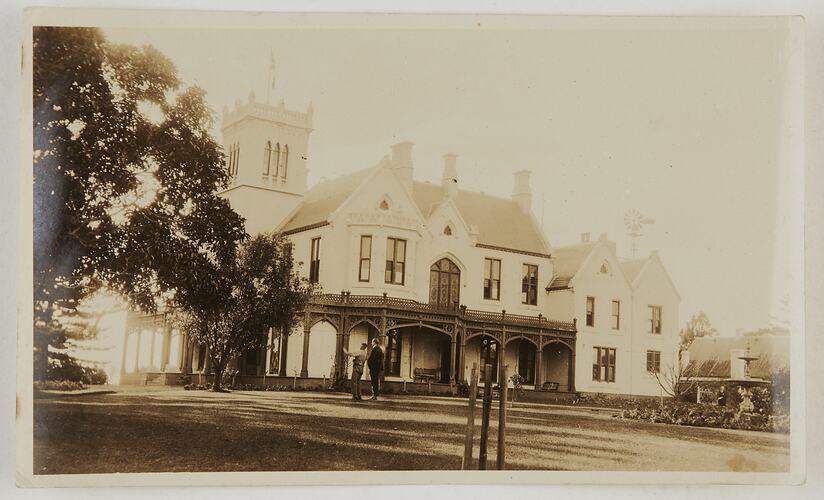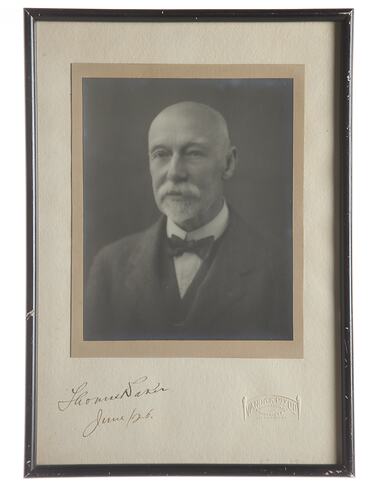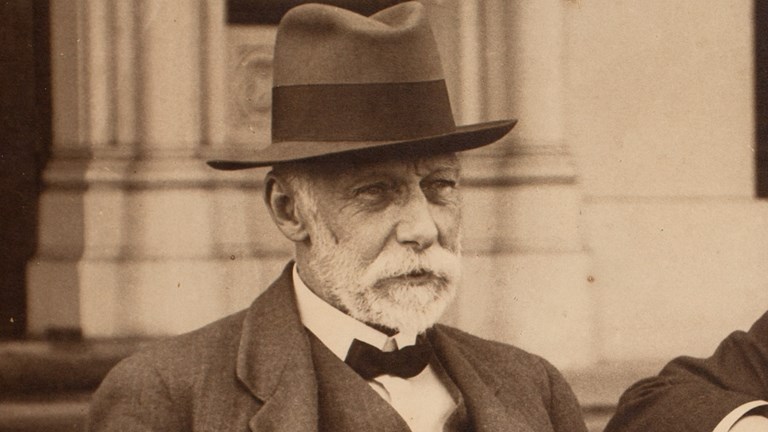
Thomas Baker
Scientist, Manufacturer, Entrepreneur, Philanthropist
Thomas Baker was a self-made man who made a fortune as a photographic manufacturer in Australia – and then gave much of his wealth away to medical research and charity.
"Nobody spent his money more wisely and less ostentatiously."Bulletin, 12 Dec 1928, p. 14
The son of a blacksmith, Thomas Baker was a born entrepreneur and inventor. Baker channelled his scientific knowledge and business acumen into various industrial enterprises from a young age before entering the emerging field of popular photography in the 1880s and building an Australia-wide empire from his home in Abbotsford, Melbourne.
A Budding Entrepreneur
After migrating to South Australia from England with his family in 1865, Thomas Baker later moved to Queensland. Here he married Alice Shaw, and worked as a pharmaceutical chemist, and surgeon dentist, from 1876 until 1880.
In Queensland, Baker showed his early inventiveness and entrepreneurship by creating a dentifrice to clean teeth with, which he named Coraline. He received Vice-Regal patronage for his new product and exhibited it at the 1879 Sydney International Exhibition, and seemed to find commercial success.
He later wrote up the formula for Coraline in a book that he used to document his photographic emulsion experiments and manufacturing formulations, which is now held in the Kodak Heritage Collection by Museums Victoria.
A Grand Home by the Yarra River
In the early 1880s, the Bakers moved south to Victoria and settled in Abbotsford, an inner-city Melbourne suburb. They were in a good financial position, probably from the success of Coraline, and were able to purchase ‘Yarra Grange’ a grand bluestone house located on about 7 acres, with Yarra River frontage.
Yarra Grange was to become the hub of their domestic, social and commercial world for the next few decades.
Photographic Goods Manufacturer
In 1885 while living at Yarra Grange Thomas Baker started a photographic business selling Baker’s Gelatine Plates.
He teamed up with John Joseph (JJ) Rouse in 1887 to form Baker & Rouse, which was a household name in the world of photographic manufacture and retail in the late 19th and early 20th century, before amalgamating with Eastman Kodak in 1908 to form an Australian Kodak subsidiary, which still exists today.
Inventor and Early Adopter of Technology
Thomas Baker had a curious scientific mind and a talent for technology, and registered a number of patents between the 1870s and early 1900s.
These first related to his dental health product Coraline and later to the drying of photographic plates, photographic papers, a press for photographic mounts, a camera back and other parts, improved methods for packing chemicals, and photographic chemicals.
Baker also registered a trademark for his famous ‘Austral’ brand in 1887, with the word Austral surrounded by stars arranged in the shape of the Southern Cross. He registered this trademark for a wide range of products, highlighting his ambitious vision for his future as an industrial chemist.
An Enduring Interest in Science
Having practised pharmacy and started training in medicine, Thomas Baker retained a deep interest in science throughout his life. In 1911 he was invited to be part of the Australian astronomy expedition to view the solar eclipse on the Tongan island of Vavau, in the Pacific.
The expedition brought both of Baker’s key interests together, photography and science.
Global Traveller
Thomas Baker was a frequent traveller to Britain, North America and Europe in the early 20th century.
As a successful industrialist and importer with business links in the northern hemisphere, his globe-trotting was not surprising.
Between 1901 and 1923 he made at least six trips overseas by ship, most of them with his wife Alice and his sister-in-law Eleanor Shaw. They usually stayed abroad for 6-9 months, but during WWI they were away for almost 2 years.
A Place for Weekends
Thomas Baker became extremely wealthy, particularly after Baker & Rouse merged with Kodak.
Although he was a generous philanthropist, and a modest man, he also enjoyed his money. He owned a series of limousines, including a Rolls Royce, and employed a driver.
In 1908 he and his wife Alice acquired a country property named ‘The Chalet’, so that, as he wrote to George Eastman, “we might have a place where we could go for weekends.”
Later on, in 1919, as their fortune accumulated further, the Bakers purchased a large seaside estate, Manyung, a mansion situated on a 300 acre property in Mornington.
A Life of Society and Service
As their status grew, Thomas Baker and his wife Alice became part of the elite Melbourne society, and were particularly active in the arena of community service and charity.
Thomas Baker was a member, and then the Vice-President, of the Board of Management of the Alfred Hospital in the 1920s. He was also closely involved in the Melbourne Rotary club, and in 1928 he became its President.
A Generous Philanthropist
Baker had been a generous benefactor since the beginning of his photographic manufacturing career in the 1880s, and this only grew as his wealth expanded.
His philanthropy supported a broad range of causes. However, reflecting Baker’s earlier study of pharmacy and medicine, an abiding focus of his philanthropy throughout the 1910s and 1920s was medical research.
Thomas Baker’s lasting legacy was to fund research at the Alfred Hospital, along with his wife and his sister-in-law. The three of them established The Thomas Baker, Alice Baker and Eleanor Shaw Medical Research Institute’, now known as the Baker Heart and Diabetes Institute.
A Life Well Lived
Baker died at Manyung at midnight on 5th December 1928 aged 75 years old.
His long-time business partner, JJ Rouse, wrote to George Eastman that “When I heard the sad news, it fairly broke me up.”
“One of The Cleverest Photographic Scientists in The Southern Hemisphere”
Sydney Morning Herald, Thursday 6 December 1928, p. 12
The numerous tributes to Baker commented particularly on his benevolence, with the Bulletin stating that “Nobody spent his money more wisely and less ostentatiously”.
Thomas Baker’s estate was valued at over £270,000 and his will ran to 36 pages. His charitable spirit followed him even in death. A kind boss, he didn’t forget his valued employees and also set up a trust in perpetuity for medical research and other causes.
References
Argus, 24 Sep 1884, p.8
Australasian, 8 December 1928, p.12
Australasian Photo Review, July, August and September 1911; 15 Dec 1928, pp.1, 584; 14 January 1933, p.8
Baker Institute Archives, Marriage Certificate of Thomas Baker & Alice Shaw, 1877
Bulletin, 12 Dec 1928, p.14; 19 Sep 1928, p.46
Australian Dictionary of Biography, De Serville, Paul, ‘Thomas Baker’, first published 1979, Biography - Thomas Baker - Australian Dictionary of Biography (anu.edu.au)
George Eastman Museum, Letter from Thomas Baker to George Eastman from Yarra Grange, 6 April 1912; Letter from Thomas Baker to George Eastman from onboard the SS Aorangi, 16 May 1912; Letter from Thomas Baker to George Eastman from Hotel Bellevue 17 May 1912; Letter from Thomas Baker to George Eastman from Hotel Bellevue May 29 1912; letter Thomas Baker to George Eastman from P&OSNCo near Marseilles 9 March 1923
Government Gazette - Victoria, 13 August 1886, p.2377; 23 Sep 1887, p.2821; 12 May 1893, p.2070; 29 July 1898, p.2892; 14 October 1898, p.3658; 22 June 1900 p.2333; 19 Nov 1902, p.4578; 24 September 1902, p.3914; 9 September 1903, p.2957
Government Gazette - New South Wales, 9 August 1878, p.3131
Museums Victoria Kodak Heritage Collection, HT 37434, Letter from Thomas Baker to George Eastman, 09 Mar 1912; The History of Kodak in Australia, Nigel Beale (unpublished, 1983)
National Archives at Washington, D.C.; Washington, D.C.; Passenger Lists of Vessels Arriving at San Francisco, California; NAI Number: 4498993; Record Group Title: Records of the Immigration and Naturalization Service, 1787-2004; Record Group Number: 85; Ancestry.com. California, Passenger and Crew Lists, 1882-1959 [database on-line]. Provo, UT, USA: Ancestry.com Operations Inc, 2008.
Sands & McDougall Directory, 1883-1886
Stewart, Ian, former Kodak chemist, who identified the Coraline formula in Baker’s formulae book in a Museums Victoria research project, and undertook archival research
Sydney Morning Herald, 6 December 1928, p. 12; 1 February 1929, p.18
Table Talk, 24 November 1927, p.65
University of Rochester library, Kodak Historical Collection, #003, Series II, Letter from JJ Rouse to George Eastman, 27 December 1928; Letter from Thomas Baker to George Eastman, 4 Sept 1928; 29 May 1922 letter Thomas Baker to George Eastman
